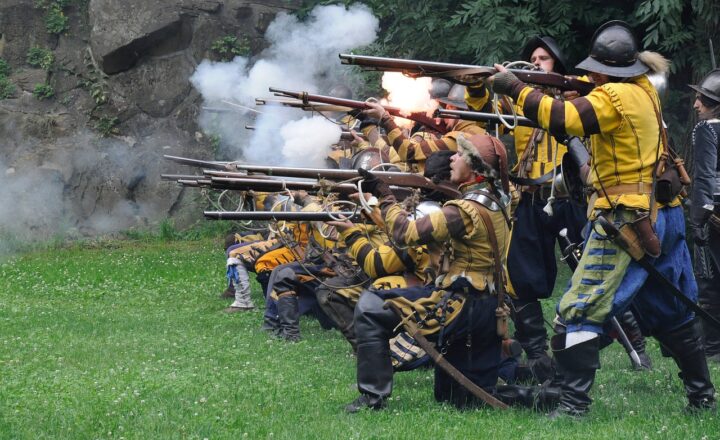When the Titanic Sank Twice: The Story of a Boat Model That Suffered the Same Fate
November 15, 2024
The Titanic is a name that echoes through history, representing the opulence of early 20th-century humanity and the tragic consequences of that era’s hubris. Her ill-fated maiden voyage in April 1912 remains one of the most infamous disasters in maritime history. But what if we told you that not only the grand RMS Titanic met with disaster, but a model of that very ship mirrored her fate? In this article, we will delve into the story of the Titanic model that sank not once but twice, creating its own legendary narrative embedded in the annals of maritime curiosity.
1. The Legacy of the Titanic
The RMS Titanic was a British passenger liner that struck an iceberg on its maiden voyage, resulting in the deaths of over 1,500 souls. Launched in 1912, she was celebrated as an engineering marvel, touted as “virtually unsinkable.” However, her tragic destiny became a powerful reminder of the limits of technology and human folly. Movies, books, and documentaries have endlessly recounted her story, immortalizing the ship and the lessons learned from its demise.
In the decades that followed, the Titanic inspired numerous models, replicas, and artistic creations. Some of these were simply remarkable in details, craftsmanship, and scale, demonstrating humanity’s desire to keep the ship’s memory alive. Among these models was one particular creation — a scaled replica that would take on more than just the mantle of artistic homage.
2. The Titanic Model: Designed for Perfection
Crafted in the mid-20th century, the Titanic model was constructed with the utmost reverence for accuracy. Built from a variety of materials, including wood, plastic, and metal, it featured the intricate details that made the original ship a marvel — life boats, smokestacks, and decking that mirrored the real Titanic’s structure.
However, this model was also designed with functionalities that would purposely mimic the Titanic’s journey: it was equipped to float in water and demonstrated the mechanics of ship movement. The fascination with marine engineering led to a desire to test it in real water environments.
3. The First Sinking: A Pilot’s Error
In what would become an unforgettable day for its creators, the Titanic model was set for its maiden test voyage on a calm lake. However, as with the original ship, fate had other plans. While enthusiastically showcasing the model to friends and enthusiasts, it was set adrift into the water. Unfortunately, an expert pilot lost control of the model due to a mechanical malfunction, causing it to collide with a submerged object.
What ensued was a somber scene as the model began to take on water, sinking beneath the surface. Just as on that fateful night in 1912, spectators watched in disbelief as the monument to human ingenuity vanished into the depths, reminding everyone of the sea’s unpredictable power.
4. Resurfacing: The Recovery Efforts
After the initial sinking of the replica, recovery crews were summoned to retrieve it from the lake’s bottom. Astoundingly, upon recovery, the model was found with minimal damage. Gratefully, it became a symbol of resilience, along with the belief that the Titanic legacy could continue on in various forms. Enthusiasts immediately began restoration efforts, allowing the model to make a grand return.
Once restored, it was paraded in several exhibitions and garnered notoriety among ship model enthusiasts and historians alike. The model’s story had taken on a life of its own, transforming from mere craftsmanship into a fascinating narrative of survival and memory.
5. The Second Sinking: A Lesson Not Learned
Under the renewed glory of its rebirth, the Titanic model was once more set for a public demonstration. Unfortunately, the same pilot who guided it during the first catastrophe was at the helm again on this fateful day. With great enthusiasm and underestimating the potential risks, the model was launched yet again — this time, into a much larger body of water.
As crowds gathered, excitement filled the air. However, soon enough, a violent wind swept across the lake, creating waves that were unmanageable for the model’s size. Amidst gasps and recoiling spectators, the same scenario played out, with the vessel again foundering. This second sinking echoed the original tragedy in an eerie twist of fate, leaving once more the memories of a great ship intertwined with those of its imperfect replica.
6. Theories and Interpretations: What Does It Mean?
The tale of the Titanic model serves as a fascinating metaphor for human endeavors — while we strive for greatness and innovation, it is crucial to recognize the inherent risks and unpredictability that come with them. This dual tragedy compels a reflection on our relationship with our creations and the persistence of history. It reminds us that history has a tendency to repeat itself, and that the lessons of the past should remain engraved in our minds as we venture into our future.
Historically, the Titanic’s sinking prompted changes in maritime regulations, and this sinking of the model served to motivate new standards in model ship construction and safety protocols for demonstrations.
7. Reviving the Narrative: The Titanic’s Legacy Continues
Today, the story of the doomed Titanic model has been preserved through various mediums, from documentaries to social media discussions. Collectors, historians, and aviation enthusiasts curate and spread awareness about the sinking and recovery of this remarkable piece of craftsmanship.
Moreover, the model inspired future generations to reconsider how we commemorate tragedies, intertwining remembrance with innovation and learning. As advancements in materials and technology are incorporated into model designs, builders strive not just for aesthetic authenticity but also operational safety, ensuring that such fates can be avoided moving forward.
Conclusion: History as a Teacher
The story of the Titanic model that sank twice is more than just an amusing anecdote; it serves as a poignant lesson about the intersection of ambition and the unpredictable forces of nature. Both the full-scale Titanic and her model elicit fascination, curiosity, and reflection on human error and resilience.
As enthusiasts and historians continue to commemorate the Titanic’s rich legacy, we are reminded to respect the past while learning from it. The tale of the Titanic model is a gentle nudge that keeps us grounded as we navigate our own ambitions — reminding us that even in greatness, humility and caution are essential.
So, as we remember those who lost their lives aboard that fateful ship, let us not forget the model that followed in her footsteps, creating a narrative of its own through its remarkable, albeit unfortunate, endeavors.







